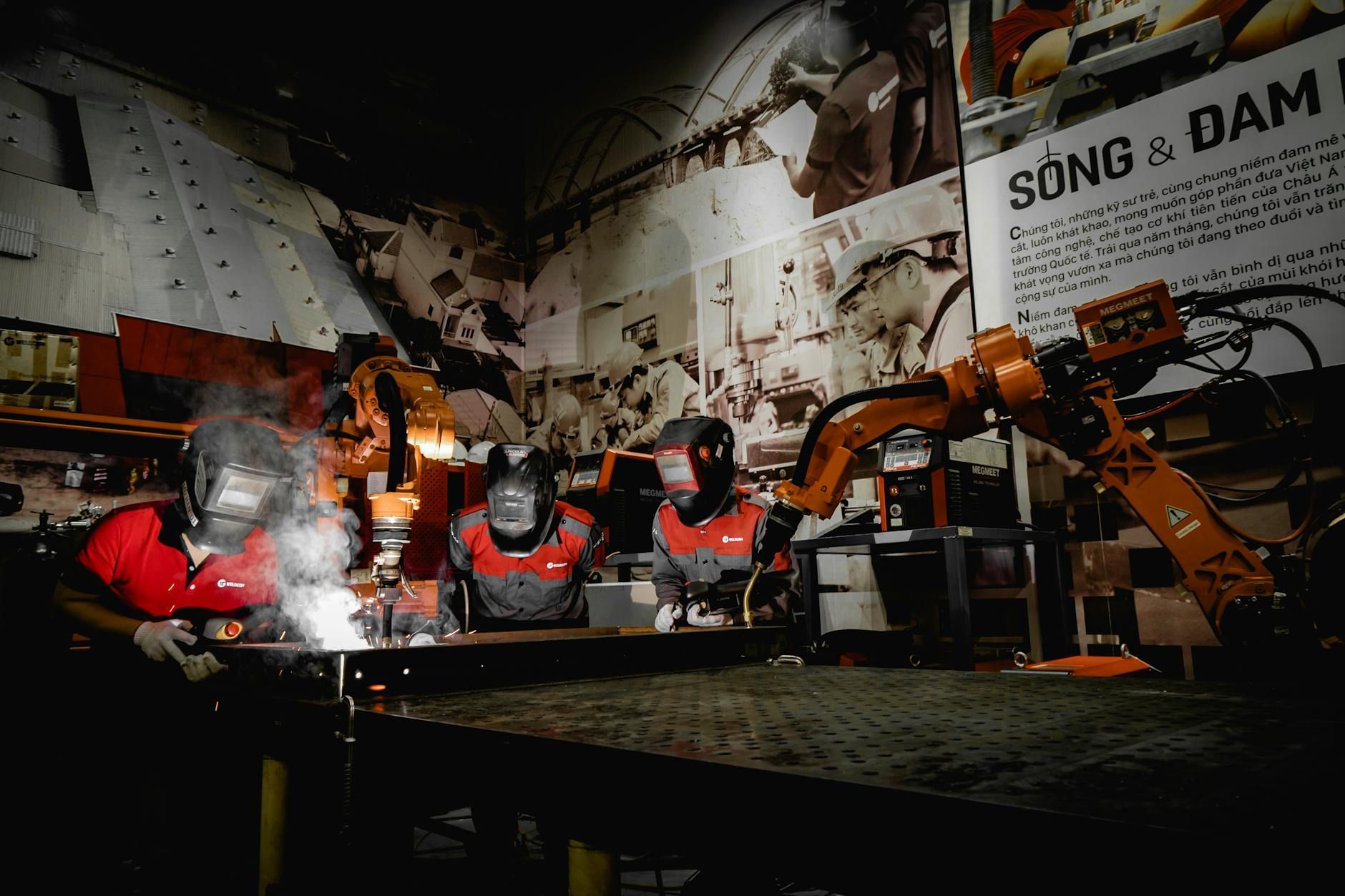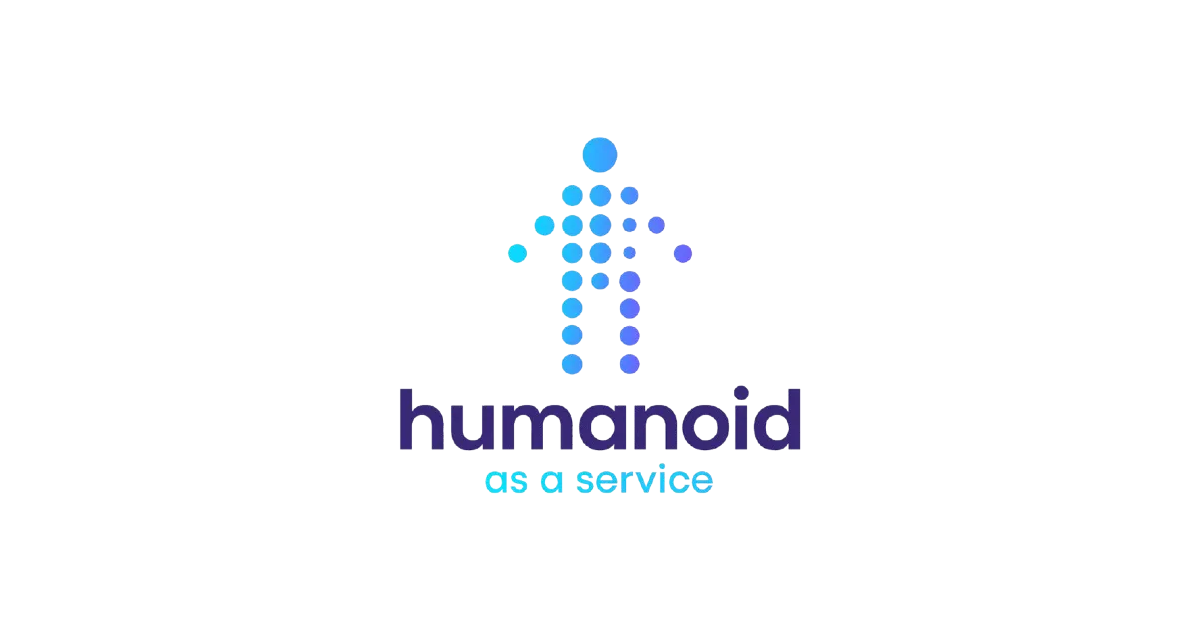Strong Wealth Solutions
Don’t Fear Change: Embracing Automation in the Workplace
Automation in the workplace can feel like a giant puzzle at first. Maybe you’re picturing robots taking over jobs, or you’re worried your team might resist the shift toward automated processes. The truth is, embracing automation isn’t about losing control or replacing human expertise. It’s about letting technology handle tedious tasks so you can focus on creative thinking, leadership, and strategy. In other words, it prevents you from getting bogged down in repetitive work that drains both your efficiency and enthusiasm.
In this article, you’ll discover how workplace automation can support your team’s growth, drive innovation, and free up time for the projects that really matter. We’ll explore how to address fears, plan your implementation approach, and navigate ethical considerations. By the end, you’ll see that “change” doesn’t have to be a scary word. It can be the catalyst for better collaboration and fresh opportunities.
Understand workplace automation basics
Before diving into the benefits, it helps to clarify what we mean by automation in the workplace. In essence, it’s when you use tools or software to carry out routine, repetitive tasks so human team members can focus on bigger goals. That can mean anything from scheduling software that auto-generates meeting reminders to advanced artificial intelligence (AI) that predicts customer behavior.
Why it matters to you
- Frees you from manual data entry and other repetitive jobs.
- Enables you to make faster, more accurate decisions.
- Lets you dedicate resources to strategic initiatives instead of busywork.
Workplace automation might also involve robotic process automation. If you’ve heard that term, it refers to software “bots” that carry out tasks by mimicking the way humans interact with computer systems. They handle data transfer, form completion, and other rule-based tasks across a variety of platforms.
Quick examples to illustrate
- Email filters that automatically categorize or label important messages.
- Chatbots that handle basic customer queries 24/7.
- Automated invoicing systems that send reminders and process payments.
When you take advantage of these types of tools, you reduce human error, speed up processes, and maintain consistency. That doesn’t just help your bottom line, it also boosts your team’s happiness because they’re free to concentrate on the tasks and ideas that move your business forward.
Tackle your concerns about automation
Feeling a little uneasy about implementing automation? You’re far from alone. Many managers and employees worry that automation will make their roles obsolete or leave them without meaningful responsibilities. Others fear the upfront cost and complexity, imagining that integrating new systems might trigger confusion or take too much time.
Fear #1: Job displacement
One of the most common worries is that machines and software will take over jobs, leaving people unemployed. However, research points to an important trend: While automation does shift certain responsibilities away from humans, it often creates new roles that didn’t exist before. For example, as you start relying more on data analysis and machine learning, you need in-house expertise to manage, interpret, and refine those systems. You need people who understand the nuances of your business goals and can strategize ways to improve.
Fear #2: Costs and complexity
Another concern is the expense of investing in new technology. Sure, there is a cost involved in rolling out advanced solutions, and you’ll also invest energy in training. But the long-term returns usually outweigh the short-term hit. When you automate, you free people up to do higher-value work. Over time, those productivity gains tend to surpass the original implementation costs.
Fear #3: Resistance from your team
Sometimes team members fear that they won’t be able to keep up with changing tech demands. Addressing this worry is more about communication than technology. Be transparent about why you’re automating certain tasks. Show employees how these changes can help them do more creative work. Let them see that automation won’t remove their accomplishments, it’ll actually help them excel by offloading tasks that bog them down.
Recognize the benefits for your team
So, what’s in it for your team if you decide to bring automation into the fold? While your top-level goal might be to cut costs or boost scalability, it’s equally important to consider how automation in the workplace benefits everyone on a day-to-day basis.
Free up creative energy
When a piece of software handles routine tasks, you and your team can turn your attention to bigger projects. Think of the collective hours saved each week when no one has to manually update spreadsheets or chase down missing information. Those hours can turn into idea-generating sessions, strategic planning, or even one-on-one coaching with newer team members.
Minimize errors
Humans are brilliant at big-picture thinking, empathy, and innovation, but we’re not perfect at repetitive tasks. Even the most conscientious person might miss a data field or skip a step occasionally. Automated tools take instructions and consistently apply them every time without fatigue. That means fewer costly oversights and fewer headaches when you hit deadlines.
Improve employee satisfaction
It might sound counterintuitive, but automation often boosts morale. Instead of feeling drained by mundane tasks, your team stays engaged with the work that actually challenges and inspires them. And when people feel valued for their unique contributions, you’re more likely to hold on to your star performers.
Accelerate decision-making
Having real-time data at your fingertips shortens the gap between insight and action. Automated systems can gather, process, and visualize information in a fraction of the time it would take a human. You don’t have to wait weeks for numbers to be crunched or progress reports to be assembled. This instant feedback loop helps leaders make decisions quickly, which can be crucial in competitive markets.
Explore challenges and ethical concerns
Just because automation makes business processes easier, that doesn’t mean there aren’t challenges to keep in mind. Whether you’re implementing advanced AI or simpler workflow tools, you need to address ethical questions about transparency, fairness, and accountability.
Data privacy
Automated systems often collect and analyze large amounts of data. That data might include confidential client details, financial records, or personal employee information. Make sure you have proper safeguards. You’ll want robust encryption, limited access, and clear guidelines so you’re protecting sensitive data while still gaining those vital analytics insights.
Fairness and bias
Machine learning models are only as smart as the data they learn from. If the initial data set is skewed, there’s a risk of perpetuating unfair outcomes or biased recommendations. Keep an eye on how your automated tools are making decisions, especially if they handle tasks like selecting job candidates or evaluating performance metrics.
Human oversight
Automation doesn’t mean turning everything over to software and calling it a day. Even the most advanced tools work best with a human in the loop. You might need people to confirm decisions or handle exceptions that the system can’t quite interpret. Assign clear responsibility so it’s obvious who can veto or override an automated process when needed.
Employee trust
Rapid changes can sometimes create tension. Employees may suspect that management is hiding something, or that they’ll be replaced. Transparency is your ally: communicate how and why you’re automating, which roles it affects, and what employees can expect moving forward. Invite feedback and questions, so the process is collaborative rather than top-down.
Plan your automation approach
Ready to bring a bit more automation into your team’s workflow? A deliberate approach can minimize overwhelm and help you see results faster. Consider it a phased process rather than a sudden transformation.
Step 1: Identify repetitive tasks
Start by making a simple table of tasks that are repetitive and time-consuming. It could be data entry, invoice processing, or sorting emails into categories. Then categorize these tasks by time spent and complexity. A two-column table can help:
| Task | Approximate Time Spent per Week |
|---|---|
| Manual data entry | 5 hours |
| Filing and organization | 2 hours |
| Invoice processing | 4 hours |
| Customer follow-up emails | 3 hours |
Look at which of these tasks are good candidates for automation first. High-volume, low-complexity tasks are perfect starting points.
Step 2: Choose the right tools
Next, pick the technologies that are best suited to your needs. If you want to handle form-filling or data transfers, robotic process automation might be the answer. For advanced analytics, consider AI-driven software capable of machine learning. And don’t forget simpler solutions like calendar schedulers or email filters. Automation doesn’t have to be complicated to be effective.
Step 3: Communicate with your team
Before rolling out your new system, talk with the people who will actually use it. Gather feedback about workflow pain points. Ask them to highlight potential snags. This dialogue doesn’t just help you smooth the process, it also fosters more acceptance because employees feel included rather than blindsided.
Step 4: Provide training and support
Even the smartest software can be confusing if you aren’t fully prepared to use it. Allocate time for hands-on training. Provide quick reference guides, FAQs, or short video tutorials. If your solution is tech-heavy, bring in an expert or schedule a workshop so no one feels lost. The goal is to make automation an empowering tool, not a source of stress.
Step 5: Monitor and refine
Start with a pilot phase where you test your new automated workflows on a smaller scale. Track metrics like processing time, error rates, and employee feedback. After you identify what’s running smoothly and what’s not, refine the system. Automation is rarely a “set it and forget it” process. Continuous optimization is key.
Position your team for lasting success
The value of automation in the workplace doesn’t end with simply introducing a tool. Over time, you’ll see even bigger improvements if you nurture a culture of innovation and curiosity. When your team embraces ongoing learning, they’ll adapt more smoothly as technology evolves.
Encourage upskilling
Automation can free up time, and some of that time can be invested back into professional growth. Offer courses or workshops that help employees develop new skills, whether that’s data analytics, creative strategy, or project management. Emphasize how these skills align with your vision for the company’s future. By continually upskilling, your workforce remains agile.
Foster collaboration
You can use new technologies to encourage more collaborative thinking. If everyone is less buried in daily busywork, there’s more bandwidth for brainstorming sessions, cross-departmental projects, and tackling complex challenges that software alone can’t fix. When employees see how their strengths fit together, it boosts collective morale and sparks innovation.
Provide transparent leadership
Lead by example. When executives and managers openly talk about how they’re using automation themselves, it reduces the intimidation factor. Instead of hearing rumors about “mysterious software,” employees can see that you’re applying the same tools to streamline your own tasks. Invite honest feedback, so any lingering fears are addressed promptly.
Imagine future possibilities for your business
Technology moves quickly, and automation is right at the center of this momentum. AI-driven tools are getting smarter. Humanoid robotics can step in for physically strenuous tasks. And as collaboration technology keeps improving, global teams can work together more seamlessly than ever before.
Possible automation trends
- More advanced chatbots that can read tone and context, enabling smoother customer support interactions.
- Tools that integrate different departments, sharing data in real time so everyone sees the same dashboard.
- Predictive analytics that show you how likely a potential lead is to convert, or how quickly a product will ship.
For many companies, these functionalities open up new markets or new ways of serving existing clients. Instead of being limited by the size and speed of your human workforce, you stretch beyond typical day-to-day constraints. That advantage can lead to greater market share and a more agile response to evolving business challenges.
The rise of Humanoid as a Service
Companies like Humanoid as a Service (HaaS) are revolutionizing what’s possible, making sophisticated automation solutions accessible to teams of all sizes. HaaS can handle multifaceted tasks, whether that’s assisting with complex data computations, supporting frontline operations, or strengthening back-office processes. This isn’t just about robots in factories, it’s about delivering specialized technology to wherever it can lighten your load and increase efficiency.
Address ethical and social impacts
As you step further into automation, you’re contributing to broader societal changes too. That means it’s wise to keep social responsibility in mind. When technology is used ethically, it can raise everyone’s standard of living by offering better products, improved services, and safer work environments. On the flip side, ignoring the ethics behind automation can damage your company’s reputation and erode trust inside and outside the organization.
Social responsibility
Consider how automation affects not just your bottom line, but also your community. Are you creating new opportunities for employees to learn modern skills? Are you reinvesting some of your efficiency gains in professional development or community outreach? By treating automation as a broader initiative, you can make a real, positive impact.
Accountability
Who is responsible for errors when an automated system makes a bad call? Ultimately, the burden still falls on the humans in charge. Maintaining accountability means having a protocol for reviewing automated decisions and correcting them when needed. This principle fosters trust because everyone sees that you, as the leader, are still steering the ship.
Inclusivity
Be mindful about how you roll out new tools, especially if diverse teams or differently abled employees work with you. Some workflows might need adaptive features like voice commands or text-to-speech software. If that’s the case, ensure your chosen automation tools are accessible from the beginning, avoiding any barriers that could alienate team members.
Adopt a roadmap for continuous improvement
One of the main advantages of automation is that it doesn’t have to expand all at once. It can evolve and grow as your business does. Imagine you start with automating 20% of your recurring tasks. Over the course of a year, you evaluate the impact and realize you can push that number up to 30% or 40%. Meanwhile, you invest your team’s reclaimed hours into new product lines or strategic partnerships.
Periodic reviews
Schedule quarterly or semi-annual reviews of your automated systems. Ask questions like:
- Has our error rate changed?
- Were there any unexpected system failures?
- Are certain tasks still manual bottlenecks that we could automate next?
This regular check-in encourages you to remain agile and refine your processes. It also keeps your team engaged with the new technology, reminding everyone that automation is a living resource, not a one-time installation.
Build resilience
Automation can remove friction. However, you must be prepared for times when your system is offline or a new software update causes glitches. Put a backup plan in place. Make sure a handful of employees understand the manual processes behind the automated steps. This level of readiness not only protects your business operations, it also helps maintain confidence in new technology.
Expand your global reach
If you operate beyond a single location, automation can bring even more advantages. Shared platforms and centralized data allow teams in different regions to collaborate as if they were in the same office. Time zones become less of a hurdle because communications and handovers can happen seamlessly. Language barriers also shrink if you integrate real-time translation tools or AI-based text analyzers.
Scaling made simpler
When your business grows, manual processes can become too unwieldy. Automation allows you to scale without hiring an equally large team to handle repetitive tasks. This approach keeps overhead costs reasonable, so your leadership can invest money elsewhere. Want to open a new branch? Deploy your existing automated workflows with minimal tweaks. That way, your new location follows the same data standards, communication processes, and invoicing methods as your main office.
Entering new markets
Automated systems can help you investigate new territories. By processing customer data quickly, you spot trends that reveal hidden market opportunities. Perhaps your business appeals more to a niche group on the other side of the globe, but you never realized it because you were looking at data manually. Automated analysis can highlight these clues, giving you the chance to expand strategically.
Involve your employees for smoother transitions
Keep in mind that successful automation in the workplace is never just about software. People are at the heart of your company, so make sure they feel involved and empowered throughout the journey.
Gather feedback regularly
Rather than implementing a set of changes and walking away, gather ongoing feedback from each department. Ask employees:
- Which aspects of their workflow feel more productive now?
- Which parts still feel cumbersome?
- Do they see any missed automation opportunities?
You can gather feedback through short surveys, team huddles, or anonymous suggestion boxes. By treating your team members like collaborators, you’ll catch small issues before they escalate and discover new opportunities you might never have noticed.
Celebrate small wins
Automation transitions can be tricky. Make sure you celebrate incremental successes, like noticeable drops in error rates, or a quicker project turnaround. These moments show employees that the shift is working, and it helps maintain momentum. Plus, it fosters a culture of positivity and appreciation, which can be rare during big organizational changes.
Invest in leadership development
Your managers need support too. Offering leadership development courses on how to leverage automation responsibly can help them feel confident guiding their teams. They’ll learn strategies for communication, conflict resolution when changes bring tension, and identifying the right tasks to automate next. Well-trained leaders can champion the cause of automation effectively and keep morale high.
Collaborate with HaaS for streamlined solutions
While you can build some automated tools in-house, specialized partners like Humanoid as a Service (HaaS) can accelerate your journey. HaaS offers targeted solutions to automate complex or time-consuming processes. This means you don’t have to learn every aspect of robotics and AI from scratch. Instead, you get a custom plan that aligns with your company’s unique challenges.
Why consider HaaS
- Expertise across multiple industries, so you get best practices drawn from a broad range of clients.
- Scalable solutions that adapt to your business size and goals.
- Continuous updates and technical support, reducing the maintenance burden on your internal team.
Automation doesn’t have to be an endless do-it-yourself project. By partnering with a provider that understands your specific issues, you avoid a lot of the trial and error that can come from implementing new systems alone.
Share your journey to inspire others
It might sound like a small detail, but sharing your automation story can create a ripple effect. By talking about your experiences in internal newsletters or cross-departmental meetings, you offer practical insights that can boost other teams too.
Internal case study
Consider creating an internal case study once you’ve automated a few major processes. Document:
- The problem you were trying to solve.
- The technology you chose and why.
- The initial hurdles and how you overcame them.
- The outcomes (time saved, error reduction, morale improvement).
When other departments see the numbers, they’ll have a model for how automation can help them as well. This transparency also encourages a spirit of cooperation. People realize that each team’s success contributes to the overall success of the organization.
External storytelling
If appropriate, you can even share parts of your automation journey with clients or prospective partners. Show them that you’re a forward-thinking company committed to efficiency, accuracy, and quality. Transparency underscores trust, and it could differentiate you from competitors who are slow to adopt new technologies.
Reflect on the evolving marketplace
As new developments in AI, machine learning, and robotics emerge, the marketplace that your business operates in is shifting too. By staying in tune with these changes, you keep your company flexible and ready to pivot. Automation isn’t a stopgap solution. It’s more like an ongoing upgrade that takes place as technology advances.
Market differentiation
Embracing automation can help your brand stand out. You’ll be able to respond faster to customer demands, troubleshoot issues more efficiently, and innovate fresh products or services because you aren’t stuck in the weeds of daily ops. Customers and investors will notice if your organization appears agile and ready for the future.
Regulatory landscapes
Keep an eye on changing regulations around data handling, privacy, and machine decision-making. As technology evolves, so does legislation. Being proactive protects you from compliance issues down the road. It also gives your team time to adapt your processes to meet new standards, making sure you stay competitive and legally secure.
Drive a culture of lifelong learning
Technology will never stop progressing, so a culture of lifelong learning is essential. When employees see that they can regularly update their skill sets, they’re more inclined to embrace automation initiatives. Encourage them to attend webinars, industry conferences, or online courses relevant to data analysis, AI trends, and robotics.
Mentorship opportunities
Pair less-experienced folks with tech-savvy employees who already grasp the finer points of automation. This cross-training is beneficial for everyone. Seniors hone their leadership skills, while juniors learn faster in a practical, real-world environment. You build a bench of talent comfortable with both the human and technological aspects of the business.
Rewards for curiosity
Make curiosity a core value. If someone on your team tests out a new automation tool or one of your employees dives into fresh AI software, recognize that effort openly. Let others see that exploration is applauded, not punished. This stance encourages people to continuously look for better ways of doing things, which drives innovation.
Align with your broader mission
Automation in the workplace is more than just an upgrade to your processes. Used thoughtfully, it can be a strategic pillar that aligns with your big-picture mission. For example, if your mission is to deliver top-notch customer service, automating your contact center can free human representatives to handle deeper, more personalized conversations. If your focus is sustainability, automation might help reduce waste by optimizing supply chains and resource use.
Serve customers better
When your workflows run more efficiently, customers don’t have to deal with long waits, billing errors, or back-and-forth emails. Automated systems ensure the right information is available at the right time, letting you provide more comprehensive care or faster problem resolution. Over time, this higher level of service can boost loyalty and word-of-mouth recommendations.
Empower your employees
If part of your mission is to cultivate a fulfilling work environment, automation is a hidden gem. By removing mind-numbing tasks, you help employees focus on their strengths. They can be more creative, more empathetic, or simply more present. Above all, this approach shows you trust your team’s ability to handle meaningful work.
Summarize and take that next step
Adopting automation doesn’t mean erasing the human element. Far from it. You’re shifting your team’s day-to-day energy away from repetitive tasks toward roles that need critical thinking and collaboration. Overcoming fear is part of the process, but once you do, you’ll see that this transformation can spark innovation, support your employees’ growth, and delight your customers.
Are you curious about mapping your business goals to automated solutions? You don’t have to navigate the journey alone. Book a free consultation or Get started here: https://www.humanoidasaservice.com/get-started. By partnering with experts who understand both the technological and human sides of big change, you’ll have a roadmap that fits your unique needs. Automation isn’t a threat, it’s a tool to empower your future. And today might just be the perfect day to lean in and see where it takes you.
SHARE THIS POST:
Leave A Comments:
Our Recent Posts:
Transform Your Workforce
Experience the future of work today. Book a pilot project or demo to see how humanoid automation can elevate your operations.








